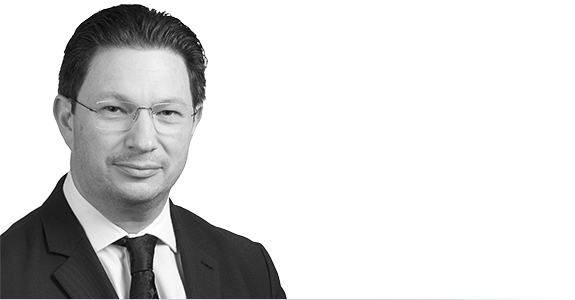Briefings
Autonomous Ships: MASS Mutations
Our bulletin published in September 2020 last year 1 considered the developments of Maritime Autonomous Surface Ships (MASS) as the shipping industry continued to suffer the impacts of the global spread of coronavirus disease 2019 (COVID-19).
Since our last bulletin, we have seen the development and rollout of multiple vaccines to combat the COVID-19 pandemic including the emerging variants and mutations. Simultaneously, the transport sector continues to undergo a digital and sustainability transformation. MASS continue to develop rapidly, encompassing all aspects of the shipping industry from container vessels to passenger ferries.
Second international ship autonomy and sustainability summit
On 30 November 2020, Paul Dean of HFW moderated the Second International Ship Autonomy and Sustainability Summit. The summit, run by the European Commission and the Norwegian Forum for Autonomous Ships (NFAS), discussed the future of autonomous ships and shipping, and how countries are dealing with national and international developments in automation, digitalisation and sustainability. Speakers at the summit included key stakeholders in the maritime industry, representatives from the European Commission and representatives from the governments of many key shipping countries, such as Norway, Finland and South Korea.
A theme of the summit, and one of the drivers for the development of MASS, was the impact that climate change is having on the shipping industry and how autonomous shipping can be used to combat it. It was made clear that technological advances in autonomous shipping will be a key aspect to the de-carbonisation of shipping. Kitack Lim, Secretary-General of the IMO, in his address to the summit stated that autonomous shipping has the capability to “increase safety, improve environmental performance, enable more cost effective shipping and to redefine the industry”. The role of regulation and the possible barriers to development and technological advancement that regulation may present was also discussed, along with how regulation can be used to ensure the safety of advancements in automation and the digitalisation of shipping.
Commercial vessel developments
As featured in previous HFW bulletins, the Yara Birkeland, developed by Kongsberg in collaboration with Yara International, is the first fully battery operated, zero emission container vessel designed for autonomous operation. She is designed to ship containers of fertiliser by sea with a view to relieving road traffic, an estimated 40,000 diesel trucks annually, and reducing the associated pollution2. We previously reported that as a result of COVID-19 certain projects, such as the development of the Yara Birkeland, had been slowed and paused, however in November 2020 the ship was handed over to Yara International by the Norwegian shipyard Vard Brattvåg3. She has since carried out her maiden voyage powered solely by batteries, sailing to a test area in Horten 4. She is due to undergo further testing in Horten and it is thought that she will become operational at some point this year.
Currently, the Yara Birkeland has a small crew, however the bridge of the ship is modular and is designed to be removed when the vessel is ready and certified to operate autonomously. She is scheduled for fully autonomous operation by 2022.
Some of the key challenges that the Yara Birkeland faced in her development, and an obstacle to many projects, is the lack of adequate port infrastructure and autonomous logistics on land. This has been attributed in part to the delays that took place in the Yara Birkeland project in May of last year. Smart infrastructure and the digitalisation of ports and landside operations is required, which includes the digitalisation of loading and unloading containers, order receipts, production, packing and transport to and from the ship.
As mentioned in an earlier bulletin, Norwegian insurer Gard will be providing both P&I Cover and Hull and Machinery Cover for the Yara Birkeland5.
In our last update we mentioned ASKO Maritime AS, another Norwegian-based company that is exploring autonomous shipping as a means to reduce the time, expense and environmental impact of transporting their goods by road. Construction has since started at India’s Cochin Shipyard. The project is to construct and equip two Ro-Ro vessels with autonomous technology and involves investment in port infrastructure and equipping the vessels with the technology to carry out zero emission and uncrewed operations. The two vessels, designed by Norwegian vessel designer Naval Dynamics 6, will operate with a reduced crew before moving towards fully autonomous voyages7 and are due to be delivered early in 2022.
Ocean Infinity, a marine robotics and ocean data company, announced the launch of a fleet of robotic surface vessels in February 2020 that are being developed via their new marine technology and data company, Armada. The vessels will primarily be used for gathering ocean data information and will be equipped with autonomous underwater vehicles (AUVs). The fleet will be comprised of nine 21 metre and 36 metre robotic vessels. The first phase vessels are in production and expected to be operational this year; they will be controlled and operated using satellite technology by shore-based mariners in Texas and Southampton 8. In November 2020 Ocean Infinity signed a joint development project with Shell which will see the Armada Fleet engaged in seep hunting.
In November 2020 Ocean Infinity also announced further plans for the second phase of their Armada Fleet project. This includes development of the world’s largest marine robotic vessels with eight 78 metre, optionally crewed robotic vessels. These vessels will have a skeleton crew on board but will be controlled ashore.
Another autonomous vessel used for marine data gathering and research is the Mayflower, as mentioned in our previous bulletin. Despite delays she has now been launched, backed by Artificial Intelligence systems provided by ProMare and IBM and will spend the next months in sea trials undertaking research missions and voyages before attempting to cross the Atlantic in spring of this year.
As part of the Japanese government’s Sea Trial Project on Remote Control Navigation, Japanese company NYK and its group companies MTI Co, Keihin Dock Co, alongside Japan Marine Science, conducted a second test of a remotely controlled tugboat operating in Tokyo Bay and released the results in December 2020.
The tugboat is crewed but is equipped with a remote control system that can be operated from an operation centre in the city of Nishinomiya, approximately 250 miles away from Tokyo Bay. The remote operators in Nishinomiya used sensors and cameras on the tugboat to recognise surrounding conditions, create route and collision avoidance route plans.
South Korean shipbuilder Samsung Heavy Industries has also carried out a successful remote control voyage deploying a 38 metre ship from its shipyard in Geoje Island, controlled by a remote control system based in a research centre in Dajeon, an inland city hundreds of miles away. Samsung Heavy Industries said it plans to commercialise its autonomous navigation system by 2022.
Passenger vessels
Buffalo Automation, a US-based artificial intelligence startup, have announced a fully autonomous, passenger carrying, uncrewed “robotaxi” on the Tennessee River. Greycraft Water Taxi, which is solar powered, will be hailed using an app and will utilise thermal imaging to identify safety issues and obstructions. The official launch of Greycraft Water Taxi is set for early this year.
Another startup developing automated passenger-carrying vessels is Norwegian-based startup Zeabuz. Zeabuz, which is building and operating 45 small autonomous ferries developed by researchers at the Norwegian University of Science and Technology (NTNU). The electric ferries network, which will increase to 78 ferries in the second phase of construction, is a network of self-driving fully electric ferries to be used to cross the canal in Trondheim, Norway. Passengers will be able to press a button shore-side to hail the ferry. The ferry will wirelessly charge while it sits idle at the dock. The ferries will be able to fit 12 passengers and bicycles and will allow passengers to complete a journey that would usually take 15 minutes by foot, in just over one minute.
The ferries, which are due to be launched this year 9 will be connected to a control centre from which the ferries will be remotely operated using 5G. Construction of the ferries will be carried out by CSL and Siemens. Swedish energy technology company Echandia has been contracted to build the battery systems.
While the operation of larger passenger vessels seems further away, there is ongoing investment in their development. Guvnor Group, an oil and commodities trading house, has purchased an equity stake in Artemis Technologies, a tech startup based in Belfast. Artemis Technologies started off as the Artemis Racing sailing team that has competed in the Americas Cup and is looking to use the same applied technologies to develop an autonomously controlled carbon fibre hydrofoiling high-speed vessel and propulsion system for a passenger-carrying ferry 10. The investment by Guvnor Group is in addition to the recent award of a £33million innovation grant from the UK Government.11
Artemis Technologies is also developing a 45 metre autonomous sailing catamaran with a planned top speed of 50 knots, which will generate electric power when sailing that it can use to motor when winds are light.
Law enforcement vessels
The United States Coast Guard’s (“USCG”) Research and Development Centre recently completed a trial of uncrewed surface vessels off Oahu, Hawaii in order to trial MASS for use in law enforcement operations. The tests focused on MASS from Saildrone and Spatial Integration Systems, in addition to a USCG owned autonomous research vessel made by Metal Shark. The trials involved the use of simulations for surveillance to detect illegal behaviours such as maritime smuggling and unregulated fishing, and other uses such as improving the maritime environmental response and enhancing port security.
The vessel provided by Metal Shark is a 29-foot welded aluminium monohull pilothouse vessel fitted with Sea Machines SM300 autonomous-command and remote-helm technology. She offers transit autonomy, collaborative autonomy, active ride control and collision avoidance and the possibility of remote control vessel monitoring.
Regulation
As discussed at the Second International Ship Autonomy and Sustainability Summit, safety is a primary concern for regulators and legislators and it will be necessary for legislators to achieve a balance in maintaining high safety standards as well as keeping up with rapid technological developments. The IMO’s review of the existing legislation is ongoing, however, the aim of the regulations surrounding MASS must be to ensure that the implementation of MASS will function on a testing and trialling basis.
As regards national law, Norway is updating its national legislation to reflect the technological advances in autonomous shipping. For example, under section 25 of the Port and Fairways Act 2019 a vessel can apply for a permit to excuse itself from the requirement to have a pilot on board 12. This legislation came in to force in January 2020, but as at November 2020 the Ministry for Transport stated that it has not received a single application for a permit under the new regulations13. Norway will be introducing a new transport plan within the next year to combat the issues that are being found between the onshore and offshore operations of MASS.
In our January 2020 bulletin we considered changes to the UK Code of Practice (COP) on MASS and the third revision of Maritime UK’s COP. Maritime UK has since published a fourth revision prepared by the UK Maritime Autonomous Systems Regulatory Working Group (“MASRWG”). The need to update the guidance required for those owning and operating MASS reflects the rapid pace at which MASS is advancing.
The new version contains Industry Conduct Principles and a Code of Practice, with changes to the definition of “Ship Systems” as well as additional chapters on Cyber Security, Pilotage, Dynamic Positioning, and Vessel Data Recording. The Code also shifts from referring to “unmanned” to “uncrewed” vessels.
Meanwhile in Russia, President Putin has requested that amendments be made to the current legislation to include regulations for autonomous vessels for introduction in February 2021 14 and in December 2020 a decree was approved allowing the trial of MASS operations based on the IMO Interim Guidelines for MASS trials. This reflects a push in Russia to develop MASS projects. Russian technology company, Kronshtadt Technologies, recently entered into agreements with shipping companies Morspetsservice and SeaEnergy for the development of a commercial fleet of autonomous vessels.
Cyber security
A new chapter of version 4 of the UK COP deals with cyber security, a key issue currently affecting businesses, particularly given an increase in working from home and the risks that that may bring to businesses. This general risk is reflected in the technological development of autonomous vessels.
As detailed in our last bulletin, Paul Dean and Henry Clack have been involved in producing a paper on the impact of cyber risks and seaworthiness of MASS for the Swansea University Colloquium. This is set to be published in 2021 and considers cyber security as a seaworthiness issue. This is becoming a more frequently discussed concept, particularly following cyber security breaches such as the malware attack that hit the company CMA CGM on 28 September 2020 15 and the fears and possibilities of technical errors, hacks and cyber piracy. Cyber Security poses a real threat for autonomous vessels where cyber piracy and dangers such as the possible unauthorised access to remote control systems and attacks could interfere with the operation of a vessel itself.
HFW involvement
As mentioned above, Paul Dean moderated The International Ship Autonomy and Sustainability Summit held on 30 November 2020, and in November 2020 HFW hosted a virtual week of presentations for P&I week covering issues and trends affecting the shipping industry.
Our Shipping team is helping shipping association BIMCO to draft the industry’s first standard contract for the operation of autonomous vessels. Many of the provisions will continue to be refined and adapted over time as automation projects start to go live across the industry, to ensure that the standard contract continues to meet the needs of this emerging technology. The new standard contract will be based on the SHIPMAN 2009 agreement for use with autonomous ships, and is expected to be published in 2021.
Paul Dean, Global Head of Shipping, says: “We are proud to continue our close relationship with BIMCO. Our global shipping team have been advising operators, insurers and governments on autonomy at sea for almost a decade, and we are pleased to put that expertise to good use in assisting BIMCO with this pioneering standard contract.”
Finally, the Shipping team attended the 6th MASS Regulatory Working Group Conference which focused this year on ‘Unlocking the future of MASS’. In her keynote speech 16 Sarah Kenny OBE, Chair of Maritime UK, highlighted six issues for discussion which will need to change (to varying degrees) still further before MASS are likely to be widely adopted within the shipping industry. These are: technology and standards, governance and policy, trust, transformation and adoption, skills and investment. A copy of her full speech can be read here17, but she concluded by saying “… rather than fearing this technology-driven disruption as it impacts our sector, we must face the reality that there is huge opportunity in transforming and adapting as part of a truly global industry. This requires real, collaborative, and possibly courageous leadership, and perhaps this is the biggest key of all if we are to unlock this future”.
Conclusion
Whilst we are still yet to see fully autonomous ships operating on an international scale with an international legal framework covering the integration of MASS, there are now a number of projects on the horizon that make widespread adoption seem tantalisingly close. The Yara Birkeland is likely to become operational very soon. Many other projects are reaching their final testing and trialling phases, such as Ocean Infinity’s Armada.
The technology is already available and now what is required are some of the other pieces to fall into place. The regulatory bodies are catching up and we are starting to see national legislative bodies enact legislation to cover the development of MASS. The work of the MASRWG has driven change and increased awareness and has made significant progress in underpinning principles of design, manufacture and operation of autonomous vessels. In order for wider integration to take place, it will be necessary for MASS to be adopted by operators, owners, seafarers and the public generally and to be able to prove that the systems and hardware are trustworthy. Once this is in place, we believe that the investment and skills will follow, which will be transformative.
HFW’s autonomous shipping group continues to advise in this area and is involved in advising clients on how to navigate the implementation of MASS, advising on industry standards and monitoring how MASS is being developed across the shipping industry. With the right guidance the mutation of MASS is not to be feared.
For further information, please contact:
Paul Dean
Global Head of Shipping
T +44 (0)20 7264 8363
E paul.dean@hfw.com
Tom Walters
Partner
T +44 (0)207264 8285
E tom.walters@hfw.com
Jonathan Goulding
Senior Associate and Mariner
T +44 (0)20 7264 8573
E jonathan.goulding@hfw.com
Henry Clack
Associate
T +44 (0)20 7264 8494
E henry.clack@hfw.com
Footnotes:
- https://www.hfw.com/Autonomous-Ships-A-Pandemic-Vaccine-September-2020
- https://vimeo.com/491206642 at 31:00 at 31:00
- https://www.yara.com/news-and-media/press-kits/yara-birkeland-press-kit/
- http://www.gard.no/web/updates/content/30906149/another-step-toward-a-zero-emission-future
- https://www.hfw.com/Autonomous-ships-successfully-navigating-through-the-shallows
- https://splash247.com/yara-birkeland-tipped-to-launch-late-next-year/
- https://www.kongsberg.com/maritime/about-us/news-and-media/news-archive/2020/zero-emission-autonomous-vessels/
- https://oceaninfinity.com/2020/02/ocean-infinity-launch-armada/
- https://www.intelligentliving.co/zero-emissions-autonomous-ferry-free-norway/
- https://www.maritime-executive.com/article/gunvor-invests-in-electric-fast-ferry-startup
- https://www.offshore-energy.biz/gunvor-invests-in-artemis-technologies/
- https://safety4sea.com/wp-content/uploads/2020/12/LVM_2020_20.pdf
- https://vimeo.com/491206642 at 34:50 at 34:50
- https://seanews.ru/en/2020/12/23/en-president-putin-instructs-to-update-legislation-to-provide-for-autonomous-shipping/
- https://safetyatsea.net/news/2020/cma-cgm-services-back-online-two-weeks-after-cyber-attack/
- https://www.maritimeuk.org/media-centre/news/speech-sarah-kenny-keynote-maritime-autonomous-systems-regulatory-conference-2021/
- https://www.maritimeuk.org/media-centre/news/speech-sarah-kenny-keynote-maritime-autonomous-systems-regulatory-conference-2021/








